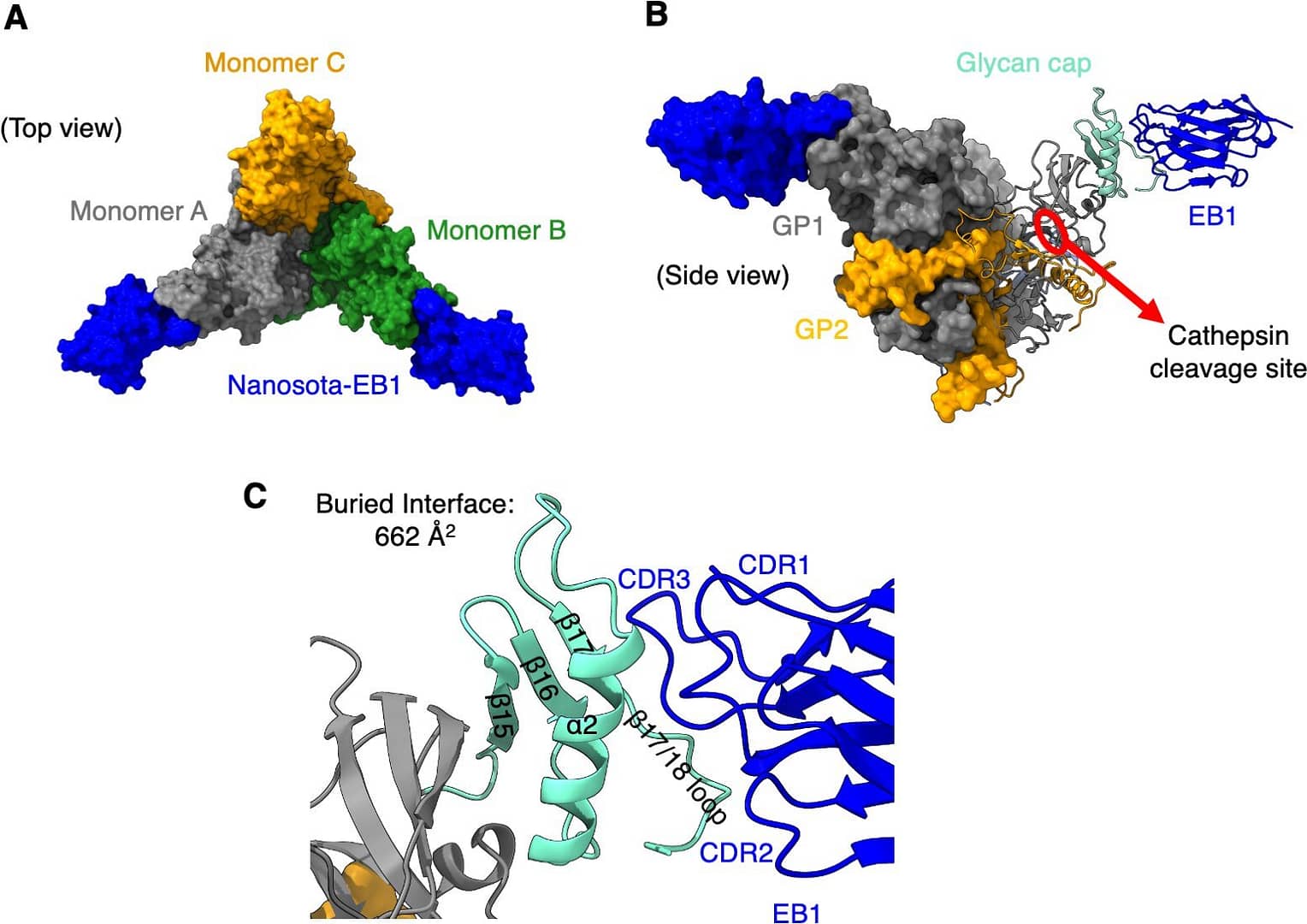Ebola virus remains threat to global health, with a high fatality rate of approximately 50%. Recent advancements at the University of Minnesota and the Midwest Antiviral Drug Discovery (AViDD) Center have led to the development of novel nanobody-based inhibitors targeting this deadly pathogen. These inhibitors, named Nanosota-EB1 and Nanosota-EB2, represent milestone in combating Ebola and potentially other related viruses.
Key Facts About Ebola Virus
About Nanobodies
Nanobodies are unique antibodies derived from animals such as alpacas. Their small size allows them to navigate areas inaccessible to traditional antibodies. This characteristic enhances their effectiveness against various pathogens. Researchers have leveraged this property to create nanobodies that can bind to specific viral components.
Development of Nanosota-EB1 and Nanosota-EB2
The research team developed two new nanobodies specifically targeting the Ebola virus. Nanosota-EB1 works by preventing the protective layer of the virus from opening. This blockage stops the virus from attaching to human cells. In contrast, Nanosota-EB2 targets important component of the virus responsible for cell entry. By inhibiting this function, Nanosota-EB2 effectively halts the virus’s spread.
Laboratory Testing and Results
In laboratory tests, Nanosota-EB2 showed remarkable efficacy. It improved survival rates in mice infected with the Ebola virus. These results highlight the potential of nanobodies as a therapeutic strategy against Ebola and similar viruses.
Implications for Other Viruses
The design methods used to create these nanobodies could also be applied to develop treatments for related viruses. This includes Sudan and Marburg viruses, which belong to the same viral family as Ebola. The adaptability of the nanobody design process opens new avenues for antiviral research.
- Nanobodies are also known as single-domain antibodies.
- Dr. Fang Li co-directed the research effort.
- The AViDD Center focuses on antiviral drug discovery.
- PLOS Pathogens is a peer-reviewed scientific journal.
- The nanobody technology was initially developed during the COVID-19 pandemic.
Future Directions in Antiviral Research
The success of Nanosota-EB1 and Nanosota-EB2 paves the way for further research into nanobody applications. Future studies will explore their potential against a broader range of viruses. Researchers aim to enhance the efficacy and specificity of these nanobodies through continued innovation.

Leave a Reply